The content of the article
The quality of culinary masterpieces depends on the state of kitchen utensils - every good housewife knows about it. The presence of a good frying pan will provide a variety of dishes and excellent cooking. If you have a good frying pan, pancakes in the house will appear much more often, the hostess will delight homemade delicious steaks and quick desserts. But in order to achieve the desired goal, you need to choose a good frying pan. It should be durable, the surface of the pan should not burn, the dishes should be washed without much difficulty. To choose quality kitchen utensils, you need to familiarize yourself with the basic characteristics of pans.
How to determine the size and shape of the pan
When we want to buy a pan, we will certainly go to the do-it-yourself store. There are all kinds of models of pans of different sizes, shapes and diameters. Therefore, first of all, you need to decide what you are buying the pan for.
If you cook pasta in a pan and fry cutlets, think about whether you need large cookware. That is, if your family consists of 2-3 people, a medium-sized frying pan will be quite enough. In large families of 5 or more people, you should buy large and deep pans. They can also fry some voluminous dishes, for example, chicken. Remember that a small pan warms up faster, and in a large pan you can fry more food at a time. Sometimes in the same family there may be several pans. Small for cooking frying, for heating cutlets. Medium pan - general purpose. Large pans are used for cooking guests. Pans of large diameter, but with small sides - for pancakes. Choose dishes according to your needs.
Also be sure to pay attention to the handle of the pan. It can be monolithic, bolted or removable. The screwed-on handle usually loosens over time - it is considered to be short-lived. The removable handle is much more convenient - the pan can be used not only for frying, but also for cooking in the oven. In addition, pans with a removable handle are much more convenient to store in a kitchen cabinet. A monolithic handle is a standard of strength and reliability, such pans almost never break. The handle of the pan can be made of metal, plastic or iron. Wooden and plastic handles do not need to be held in tack, like metal parts, because this material practically does not heat up. However, with strong roasting, fire can damage the tree and melt the plastic, but nothing will happen to the metal handle. Do not forget to pay attention to the thickness of the coating for frying. The thicker it is, the stronger and more durable the pan.
What material are pans made from?
Pans can be divided into several groups depending on the material of manufacture.
Cast-iron pan
Before using a cast-iron frying pan for the first time, it must be washed, greased with vegetable oil and calcined over low heat for about half an hour. This will allow you to use cast iron for a long time, this procedure will protect food from sticking.
Cast iron is a reference of iron and carbon; when heated, the material does not react with food, does not react to acids. But cast iron pans have disadvantages - one of which is that cast iron can rust. To prevent this from happening, after washing the cast-iron frying pan should be wiped dry, put on fire for about 5-7 minutes and only then put into storage. Another drawback of cast iron is its heavy weight. This is especially noticeable if you cook pancakes in such a pan - you have to raise the dishes more than once.
Stainless steel
This is an environmentally friendly tableware, the material of which does not react with food. These pans have a beautiful design, bring the spirit of professional cooking to the kitchen. A stainless steel pan quickly heats up, it is used for high-speed frying or heating of ready-made dishes. If the food burns out and the pan overheats, the steel does not emit any unpleasant odors and harmful substances. These pans are lightweight and do not rust. If you have an induction cooker, it is recommended to use steel cookware, as it attracts the pan with a magnetic field.
However, this pan also has disadvantages. If you hold it on fire without food, green and blue spots, stains may appear on its surface. If the oil burns in the pan, it is rather difficult to wash it, besides, the steel is afraid of abrasive cleaners - the coating spoils, the food as a result starts to burn.
Aluminum
The aluminum pan can be cast or thin-walled. The advantages of such dishes are low cost and low weight. If a good coating is used in the manufacture of the pan, the food does not stick to such dishes, it does not stick. The metal heats up quickly, quickly distributes heat on the surface of the fryer. But the aluminum pan has its drawbacks - it easily bends and even deforms. You can not worry about the surface of the pan, if you stir the food with solid iron spatulas or even a sharp fork - scratches to such dishes are not terrible. Unfortunately, without a special coating, the food in such a pan will constantly stick to the bottom.
Copper Pans
In modern kitchens, you can increasingly see copper pans. They are strong enough, but copper can react with food (especially acidic) and change the taste of cooked dishes. That is why a copper pan should have a quality coating.
Ceramic pans
These are modern models of kitchen utensils that are widely used. The pan can only have a ceramic coating or it can be made entirely of ceramic. This is an environmentally friendly product, food after cooking in such a dish absolutely does not absorb extraneous tastes, smells and chemicals. Ceramics allows you to heat food above 400 degrees Celsius. Ceramics have drawbacks - the most important thing is that this material is afraid of sudden temperature changes. That is, after cooking, do not rush to put the pan under a stream of cold water - it can crack. Also, ceramics can not be soaked in water for a long time. But ceramic products allow you to choose a pan to match the interior of the kitchen - they can be presented in any shades.
These are the main types of materials that are used to make the pan. But in frying utensils, the main role is given not to the material itself, but to the coating.
How to choose a cover for the pan
It depends on the coating how heat is distributed over the surface of the pan, and most importantly, whether food will stick to the dishes. Among modern models of braziers, the following types of coatings are shared.
- Titanium coating. Today, titanium coating is considered the most durable, durable and high quality. Food does not stick to such a coating, the material is not afraid of sharp and hard objects, it can be cleaned with abrasive products. Food in a pan with such a coating does not burn, it can be fried without oil. The titanium coating is quite light. The only negative is the high price of the products.
- Teflon. Manufacturers recognize that Teflon coating can not be called absolutely safe and environmentally friendly. Food in such a pan does not stick, but when heated, the Teflon coating can release harmful chemical compounds into the products.
- Ceramic. Today, ceramic coating is applied to the same ceramic products, to pans made of cast iron or steel. The ceramics are quite dense, but with a sharp and sharp impact (if, for example, a mug or knife fell into the pan), the ceramics may crack or crack off with a piece.
- Marble coating. It is also called diamond or stone. This is a very durable coating that perfectly distributes heat over the surface. However, in order to avoid scratches with such a coating, only wooden and plastic spatulas should be used; such dishes cannot be cleaned with abrasive products.
- Enamel coating. Most often enamel or roasting pan is coated with enamel. The coating is not afraid of scratches and scuffs, but a sharp blow can cause chips. Enamel coating is not considered non-stick, most likely, it is more designed for the extinguishing process.
Knowing the advantages and disadvantages of this or that coating, you can easily choose what suits your needs and material capabilities.
Unusual models of pans
When choosing a pan, pay attention to some of its features. In addition to classic dishes of various sizes and diameters, there are special pans, for example for pancakes. They are quite light, with low sides, have an excellent non-stick coating, which allows you to turn pancakes even in the air. There is also a grill pan with a ribbed bottom. She will certainly find her place in your kitchen, if you often cook meat or fish, bake vegetables. Such a frying pan allows you to fry food in your own juice, not to be soaked with oil, food after cooking lags well behind the dishes and it turns out incredibly mouth-watering with characteristic stripes, like after cooking a barbecue. In the struggle for the versatility of dishes, you can buy a roasting pan - this is a cast-iron frying pan most often with a lid of the same material. The brazier has a large volume - you can cook dinner for the whole family. It can be used for baking dishes in the oven, a roasting pan perfectly replaces the duckweed and baking dish. The food in the roasting pan is perfectly fried and does not burn. But for some, a brazier may be unacceptable due to handles that are too short, which, moreover, heat up.
It is more convenient for some housewives to use multi-functional dishes, which can replace a pot, a ladle, and a frying pan. If you are one of those ladies, be sure to buy a stewpan. It can be fried, boiled and stewed. It is especially convenient to use a stewpan if the dish involves different stages of preparation. For example, pilaf - at first the ingredients are fried, then cooked, and at the end the rice comes to steaming. A lid and an additional elongated handle are always included with the stewpan.
Another modern model that can be used as a frying pan is the Wok. In fact, the shape of this pan resembles a simple cauldron. This kitchen utensil came to us from South Chinese cuisine and resembles a simple bowl.In such a pan, frying occurs very quickly, but the food must be constantly stirred so that it does not burn. The advantage of this pan is the high speed of cooking. Due to short-term heat treatment, the products retain their natural taste, do not digest, and do not absorb a lot of fat and oil. Stir food in such a bowl is a pleasure - the high sides prevent it from falling out.
We buy a pan!
The cost of pans is very scattered and depends on the material of manufacture. Iron products cost about 1,500 rubles on average. The price for utensils with ceramic, Teflon, diamond and titanium coating can reach 12-15 thousand rubles. Modern frying pans, grill, wok and stewpan are quite expensive, simple models can cost 5-7 thousand, the price tag of branded dishes can reach up to 25 thousand for one product.
A properly selected pan is not only delicious dishes, but also a good mood of the hostess. And what can be tastier than food prepared with pleasure? Therefore, it is better to spend money on quality dishes once, which will serve you for more than a dozen years.
Video: how to choose the right pan


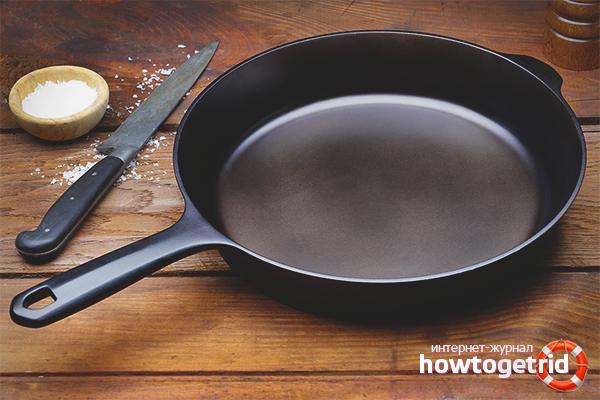
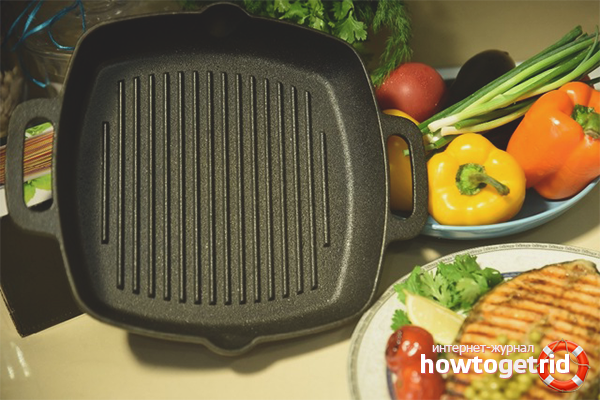
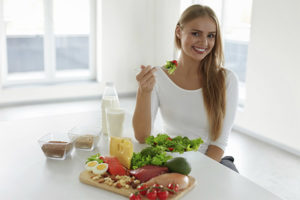
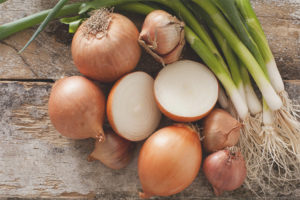
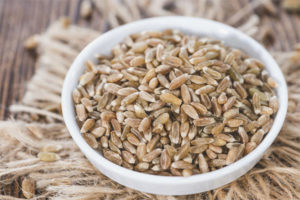
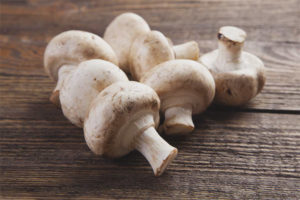
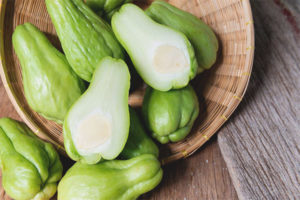
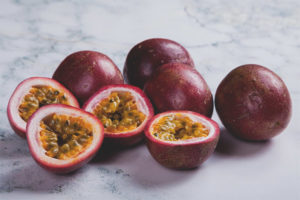
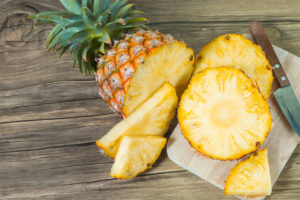
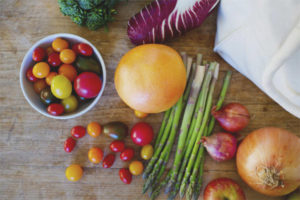
Submit